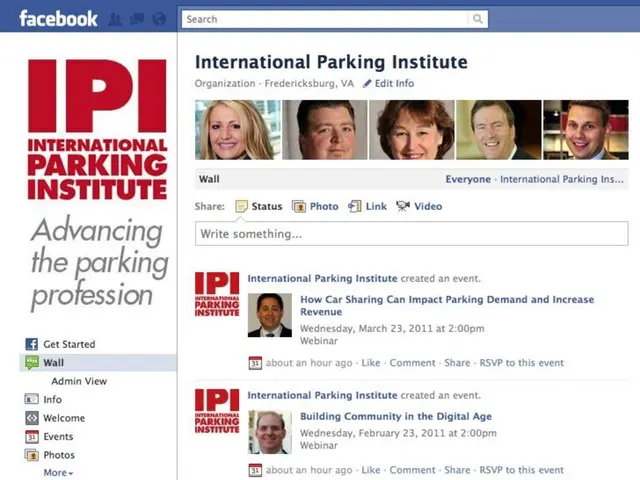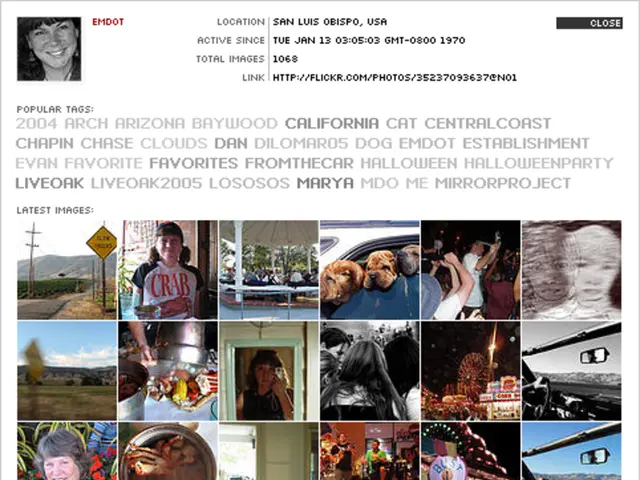Embracing Disconnection: Reclaiming Attention in the Over-Connected Era of 2024
In today's digital age, maintaining a healthy balance between technology and our personal lives is more crucial than ever. This article explores evidence-based strategies for digital wellness, aiming to help individuals navigate the complexities of our hyperconnected reality.
**Digital Wellness: A Necessary Pursuit**
Digital wellness refers to the mindful management of technology to preserve physical, mental, and emotional health. The goal is to use digital tools in ways that enhance well-being rather than contribute to stress, burnout, or social disconnection.
**Key Strategies for Mindful Technology Use**
1. **Set Clear Boundaries:** Establish daily limits on screen time, especially on work and social media use. Utilise built-in tools like Screen Time on smartphones to monitor and restrict usage. 2. **Designate Tech-Free Times:** Start your day without screens for at least the first hour to improve emotional regulation and set a positive tone. 3. **Create Tech-Free Zones:** Identify spaces in your home where digital devices are not allowed, such as bedrooms and dining areas. 4. **Practice Intentional Use:** Be conscious of why and when you use technology. Prioritise real-world interactions over digital ones when possible. 5. **Engage in Regular Breaks:** Follow the 20-20-20 rule for eye health: every 20 minutes, look at something 20 feet away for 20 seconds. 6. **Mindfulness and Meditation:** Incorporate mindfulness exercises to stay present and reduce the compulsive urge to check devices.
**Digital Detoxification Techniques**
1. **Unplug Regularly:** Dedicate specific days or hours for a digital detox—disconnecting from all non-essential devices to recharge and reconnect with yourself and others. 2. **Physical Activity:** Incorporate movement, such as stretching, walking, or yoga, to counteract the physical effects of prolonged screen time. 3. **Reconnect with Nature:** Spend time outdoors to promote relaxation and mental clarity, as is often practiced in cultures that emphasise digital breaks, like in Norway. 4. **Reflect on Digital Habits:** Periodically assess your technology use and its impact on your mood, productivity, and relationships. Adjust your habits as needed.
**Supporting Well-Being Through Community and Leadership**
Leaders in digital spaces have a unique responsibility to nurture digital wellness. By fostering safe, positive, and authentic interactions, community leaders can help reduce anxiety, loneliness, and burnout among users. This involves understanding the needs of the community, encouraging meaningful engagement, and modelling healthy digital habits.
**Practical Steps to Build Sustainable Habits**
1. **Assess Current Usage:** Track your screen time to identify patterns and areas for improvement. 2. **Set Achievable Goals:** Gradually reduce screen time by 30 minutes each day, for example. 3. **Use Support Tools:** Leverage apps and device settings to enforce boundaries and remind you to take breaks. 4. **Stay Motivated:** Celebrate small wins and reflect on the benefits you experience from reduced screen time. 5. **Seek Expert Guidance:** Consult digital wellness experts or join programs like those offered by the World Digital Detox Day Foundation for tailored support.
The book "Digital Detox: Regaining Focus in a Hyperconnected World" offers a comprehensive approach to digital wellness, going beyond reducing screen time to redesign digital lives in alignment with deepest values and authentic selves. By embracing these strategies, individuals can restore balance, improve mental health, and live more fulfilling lives in our hyperconnected world.
- Embracing digital wellness involves using technology mindfully to preserve not only physical health but also mental and emotional well-being, aiming to enrich life rather than induce stress or disconnection.
- Incorporating intentional use of technology into daily routines is crucial for maintaining equilibrium, prioritizing real-world interactions whenever feasible.
- As a significant aspect of health-and-wellness, digital wellness calls for setting clear boundaries, such as limiting screen time, and designating tech-free periods or zones.
- Educational resources like the book "Digital Detox: Regaining Focus in a Hyperconnected World" provide guidance on revising entire digital lifestyles in accordance with one's values and true self for optimal mental health and overall well-being.
- To foster positive digital habits, community leaders should cultivate authentic, safe, and meaningful interactions, promoting mental health and reducing anxiety, loneliness, and burnout among users.
- For sustainability in establishing digital wellness, individuals can consult digital wellness experts, use tools like apps and device settings to enforce boundaries, gradually reduce screen time, celebrate small achievements, and continuously reflect on the personal growth and benefits experienced from improving digital habits.




